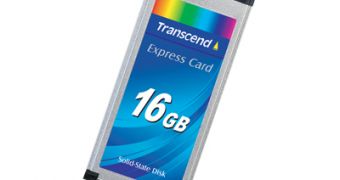When an idea comes to you, and nobody else has made use of it, work the money making machine first, before somebody else does it. The first time PCs came to the home user, they were regarded with the same face that a person 300 years ago would look at if he or she were told that the Earth is round, instead of flat. Soon after PCs started being appreciated by an increasing number of people, and now here we are, continuously raising the stakes and taking the computer to explore strange new worlds, baldly going to where no man has gone before and it's the same case with every piece of technology we can get our hands on.
Take the Solid State Disk for example, its first appearance came in the form of the I-RAM initiative from Gigabyte, which had the right idea, but didn't have the expected appreciation from the general public, and this is why their project didn't become the next best thing in the computer industry. But when you play with the top dogs, you have to play hard or else you won't survive on the market. Maybe this isn't quite the case with Gigabyte, after all, they have enough revenue not to worry about one little misfortune.
The point is that somebody took their idea and morphed it into something else, something that wouldn't violate any patent as we all know that the tribunals are full of copyright infringement cases, and the concept got transmitted into another form, the Solid State Disk. Now, much like in the case of the LED backlit LCD panels, everybody saw the potential that such a technology might have in the near future, like I've said, it's all about the money.
And furthermore, after the obvious use for a SSD drive, Transcend came with yet another twist of the original idea, and created the ExpressCard SSD. A way of giving some use to a port that normally isn't that used would be to populate it with a 2, 4, 8 or 16GB SSD card. Very convenient that this should appear just as Microsoft was rooting for Windows Vista's ReadyBoost facility. Add some Error Correction Code (ECC) to ensure data integrity to the drive and you get a cool 1.000 Euro price tag that should make you really think before actually buying one.

 14 DAY TRIAL //
14 DAY TRIAL //